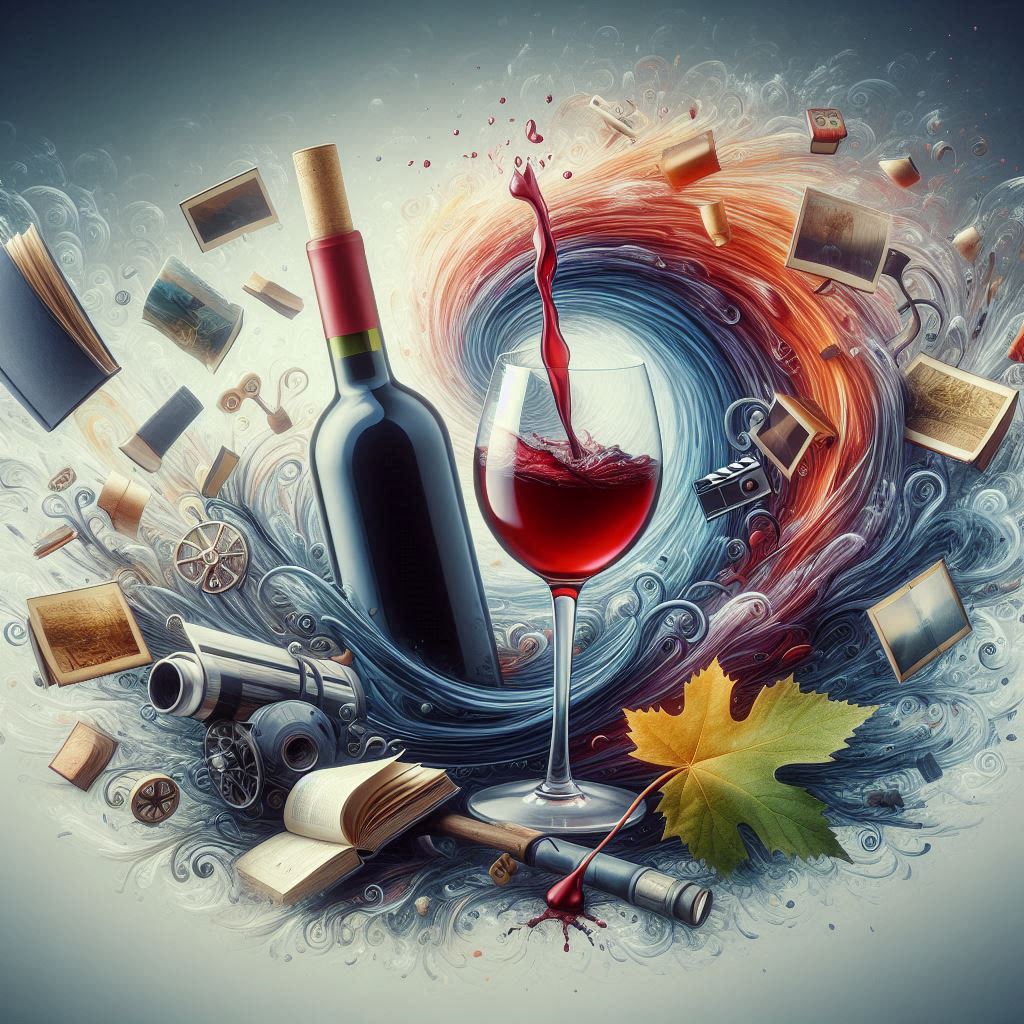They say that all roads lead to Rome, but we know that the most beautiful ones turn to a winery. I invite you to get lost on fragrant maps, among aromas that whisper stories and histories that are slowly savoured, like a good wine. Whether you are connoisseurs, curious or simply thirsty for something new, this column is the place where wine becomes poetry.
At the crossroads of wines, bottles unravel their mysteries, glasses applaud, and each drop whispers a story, a gossip or a joke. We will travel together between a Fetească Neagră and a selected Crâmpoșie, between a Merlot and a Sauvignon, between a Băbească and a Grasă, discovering how wine can be more than a drink – a bridge between people, cultures and times.
With imagination, passion and perhaps a touch of humour, we will sketch episodes from the adventurous history of wine, whether from famous wineries or from your neighbour’s glass. Have a glass or two and let the aromas whisper adventures to you. May the tannin be with us!
A well-rooted journey
The story of the vine is more than one of the persistence of a plant in agriculture; it is a story of human innovation, adaptation and our eternal connection to the land.
Somewhere in the fertile period 8,000 years ago, a chance event changed human culture forever: the wild vine bore its fruits to the first winegrowers. From the foothills of the Caucasus Mountains to the hills of Mesopotamia, this modest fruit, full of potential, became more than food, it became a story. The grape juice left to ferment revealed an elixir that intoxicated the senses and deepened the soul. Over the centuries, the humble grape has transcended its origins to become a global phenomenon, a means of livelihood, and a symbol of refinement.
Wines That Shaped Civilizations
From the ancient amphorae of Greece to the cellars of medieval monasteries, wine has played its part in shaping history. Dionysus, the Greek god of wine, and Bacchus, his Roman counterpart, were celebrated for bringing joy and creative madness to humanity. Until the Middle Ages, European monks, passionate but aware of their weaknesses, were the unsung custodians of viticulture, experimenting with fermentation techniques and the science of cultivating and protecting the soil where vines were planted, which persists to this day.
The wine trade became a global enterprise during the Age of Exploration. Spanish missionaries brought vines to the Americas, while French settlers established iconic regions like Napa Valley. From the refined reds of Bordeaux to the earthy notes of Chianti, wines have become not just beverages, but markers of identity and art.
Science meets art
Modern winemaking is a delicate ballet of tradition and technology. While ancient methods like fermenting in amphorae and crushing the berries by foot are prized in niche circles, innovations like temperature-controlled tanks and genetic mapping of grape DNA have revolutionized the craft.
Rising temperatures are threatening traditional growing regions, pushing vineyards to higher altitudes and northern latitudes. Yet adversity has also led to remarkable experiments, like growing Pinot Noir in England and Riesling in Tasmania.
A Cultural Renaissance
In every glass of wine lies a connection to the earth, to the sun, to the hands of the harvester and the winemaker. More than a drink, it is an artefact, a time capsule, of the year it was made. As enthusiasts explore the vast universe of wines and grape varieties, they rediscover forgotten grapes, revive ancient traditions and embrace the old principles, today called ecology.
The journey of the vine is a testament to humanity’s ingenuity and love of beauty. From its humble beginnings as a wild fruit to its star status in Michelin-starred and non-Michelin-starred restaurants, the vine whisper a singular truth: history is best savoured slowly, sip by sip, admiring the colours in an elegant glass and savouring unique bouquets.
The Vineyard in the Mind and Soul of Creators: The Role of Wine in the Arts
Throughout the centuries, social orders, successive emergences of arts or types of communication, wine has served as more than a simple medium; it is a symbol, a catalyst and even a character in its own right. Whether it fills a chalice on the pages of a novel, drips from the brush of a master painter or shines on the screen, wine enriches stories and images with its timeless mystique. We will unfold this journey through some famous works in which wine plays a leading role.
Wine has run through the veins of art for centuries, bringing depth, colour, and complexity to some of humanity’s greatest creations. Whether it’s pleasure, the ally of a character in a novel, the hidden plot of a film, or the central theme of a painting, its presence is undeniable, and I propose a timeless toast to creativity.
Wine is not just a drink, just the result of processed grape varieties; it’s not just a recipe or a pretext for socializing around bottles with artistic labels and elegant glasses with long, tempting stems. Wine has also generated a world full of intrigue, history, and endless inspiration, with adventures, ghosts haunting cellars, and chance crosses of varieties, forgotten and discovered by chance. From the unsolved mysteries of the vineyard to the page, stage, canvas, stone, clay, metal, or screen, wine can capture our imagination with a sip and a story. We’re giving it a shot, so starting next week I’ll be waiting for you at the Wine Crossroads.







